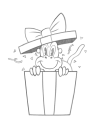The Dragon is back! In this video, sculptor Andrew Keith shows us step by step how he sculpts a game of thrones dragon from start to finish.
Newest
Kenneth Solano
4yr
is this part of the new sculpting course?
•
4yr
No this was just a fun sculpting video we did a little while back.


